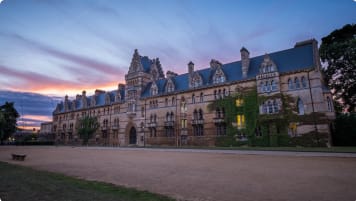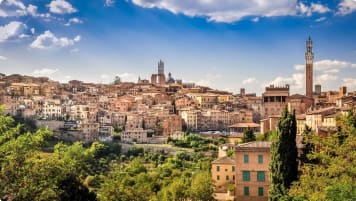Italian Renaissance Families: Ferrara and the Este
Italian Renaissance Families: Ferrara and the Este Italian Renaissance Families: Ferrara and the Este. This blog is part of a series on five influential Italian Renaissance families that shaped Italy, especially during the fifteenth and…
1 Mar 18 · 7 mins read
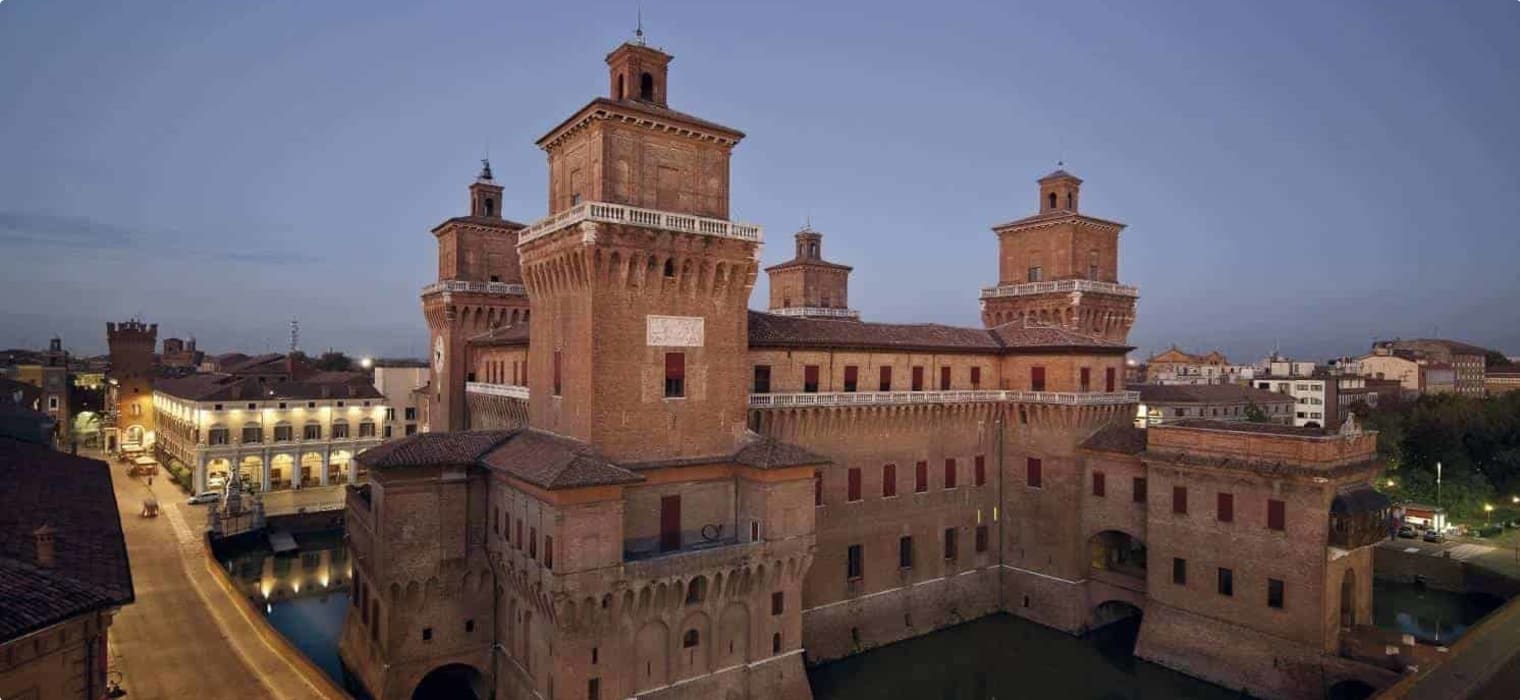
Italian Renaissance Families: Ferrara and the Este
Italian Renaissance Families: Ferrara and the Este. This blog is part of a series on five influential Italian Renaissance families that shaped Italy, especially during the fifteenth and sixteenth centuries. It is based on both our Italian Renaissance Summer School course, and our Small Group Tour of Italy, structured around the story of these five families.
Ferrara and the Este
Ferrara, which grew up around a ford over the River Po, became an intellectual and artistic centre that attracted some of the greatest minds of the Italian renaissance in the 15th and 16th centuries. Here Piero Della Francesco, Jacopo Bellini, and Andrea Mantegna decorated the houses of the Este family. Here also the humanist concept of the ideal city came to life according to the new and revolutionary principles of perspective.
A series of urban planning schemes were implemented from the 14th to the 16th centuries which made Ferrara the first renaissance city to be developed using a complex plan. In this plan the network of streets and walls were closely linked with the palaces, churches and gardens, giving precedence to overall harmony rather than accentuating the beauty of individual buildings.
The Este Family
The Renaissance history of Ferrara is closely linked to the Este family. The city had been an important trading centre during the medieval period but it was only under the Estes that it became an internationally known centre for the arts, economics, ideology, music and religion. The court flourished and for two centuries was on a par with Florence or other great capitals in France and Spain.
This is not to say that the family history was an untroubled one. Internal plots, scandals and attempted murder were common within the family during the period.
Niccolo III (1383-1441) was married three times and had countless liaisons that produced sixteen acknowledged children (twelve of them illegitimate). One of these sons, Ugo, he had executed when caught in bed with his beautiful young step-mother. (It is said that after this Nicolo issued an edict that all women found guilty of adultery should be put to death. However, he had to rescind the order when it was found that it would mean killing off a large percentage of the city’s population, including many of his past mistresses!)
Niccolo was succeeded first by one and then a second of his illegitimate sons. Leonello, the first of these, was austere and ascetic. His taste was intellectual rather than military and he made Ferrara a centre for 15th century humanism. On his death he was followed the worldly Borso who spent most of his time hunting, dressed in cloth of gold and accompanied by his pet leopards. He also died childless and a third son, Ercole, this time legitimate, became the next to take over.

Leonello d’Este c1444.

Castello Estense, complete with a moat and a drawbridge, Ferrara’s towering castle was commissioned by Nicolo II de’ Este in 1385. Initially it was built to protect the family from the town’s irate citizens, upset by increased taxation, but in the late 15th century it became the family’s principal residence. Parts of the palace are open to the public including the dungeon. It was here that Duke Nicolo III had his young second wife and his son beheaded after discovering that they were lovers, providing the inspiration for Robert Browning’s poem, ‘My Last Duchess’.
Today, the Castello still stands at the centre of the city, and the exterior has changed little since the sixteenth century. The interior consists of a series of extraordinary rooms that remain as they were when first built, including kitchens, dungeons, four Gothic Rooms with decorations and an impressive scale-model reconstruction of the castle, and a gorgeous Ducal Chapel. There is also a large room call The Hall of Games, with an eleven-panel ceiling, each painted with a scene of a different sport, in a variety of styles. If you’re visiting, the castle is open to tourists throughout the year, but make sure to check opening hours to plan accordingly.
Ercole d’Este was a soldier who had been badly wounded in battle. Earnest, serious and cautious, in complete contrast to his half-brother, Borso, he limped around Ferrara dressed for preference in sombre black. He was also an outstanding patron of the arts, favouring poetry and the theatre.
The imposing towers of the castle and the massive circuit of brick walls built by Duke Ercole dominated the surrounding fields, giving the city a distinctly defensive air. Inside the walls the atmosphere was quite different. The new walls had doubled the size of the city, enclosing not only the old medieval centre but also an expansive new section, laid out by the duke with spacious streets, orchards, villas and even a hunting park! The streets were paved and the city was bright with colour.

Ercole I d’Este, 1431-1505.
Alfonso I d’Este was Ercole’s eldest son and is said to have inherited some of the family tendency towards eccentricity. (Apparently, on hot afternoons he used to stroll around Ferrara stark naked!) But he did have taste. He was a skilled musician and a connoisseur of the arts. He commissioned Titian to paint a series of Bacchanalian pictures to decorate his private study
When Alfonso uncovered a plot led by two of his brothers for his own assassination, he had all the ring-leaders executed except for his brothers who were, instead, locked up in the castle dungeons for the rest of their very long lives.
Most famously Alfonso was married to the infamous Lucretia Borgia, daughter of Rodrigo Borgia, better known as Pope Alexander VI. This was Alfonso’s second marriage and Lucretia’s third.

Lucretia is said to have brought elegance and gaiety to Ferrara. She adapted happily to local traditions and was a major patron of Italian singers, a taste she shared with her sister-in-law, Isabella d’Este. (Isabella was married to Francesco Gonzaga of Mantua, thought to have been one of Lucretia’s lovers.) Lucretia loved music, dancing banquets and flirting but in seventeen years she also managed to bear Alfonso eight children before dying shortly after the birth of her last child.
Alfonso ruled until 1534 and on his death was followed by his eldest son, Ercole II (1508-1559).
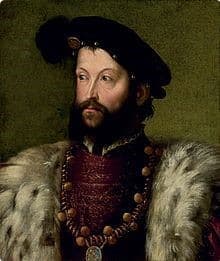
Ercole II
The Palazzo Schifanoia
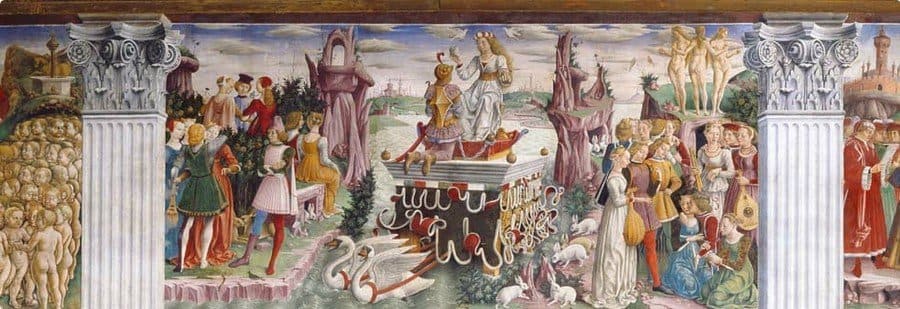
Borso d’Este made substantial alteration to his suburban hunting palace, the Palazzo Schifanoia. He added a second storey with a suite of beautifully decorated rooms designed to impress distinguished guests. The immense fresco cycle celebrates the good government of Borso but is also rich in literary allusions.
The Palazzo is currently closed for renovation (check their website for updates), but it’s still worth a visit, as it’s very impressive from the outside! It’s also featured in Ali Smith’s recent critically-acclaimed novel, How to be Both, as detailed in this Guardian article!
Palazzo dei Diamanti

The Palazzo dei Diamanti built between 1493 and 1503 was used as a residence by the d’Este family. With its exterior covered in marble blocks facetted to look like d’Este diamonds, it was a testimony of the duke’s love of expensive materials. It now houses the National Art Gallery of Ferrara. Founded in 1836, the gallery hosted the first public collection of Ferrarese paintings. It now has more than two hundred works spanning from the 13th to the 17th century
The end of a dynasty
The son of Alfonso and Lucrecia Borgia, Ercole d’Este II (1508–1559), married Renée of France, daughter of Louis XII of France. This caused him a number of difficulties as Renee favored the protestant faith and Alfonso was the pope’s vicar in Ferrara. Renee actively encouraged a group of radical thinkers at her court much to the consternation of her husband. A protestant wife was hardly ideal for the pope’s representative and Alfonso actually had her imprisoned for a short period.
His son Alfonso II first married Lucrecia, daughter of grand-duke Cosimo I of Tuscany. After she died he married Barbara, the sister of Maximilian II, Holy Roman Emperor (1527–1576). His third wife, Margherita Gonzaga was the daughter of the duke of Mantua. Unfortunately, despite his three marriages, Alfonso II had no heir and on his death, in 1598, the duchy reverted to direct papal rule.
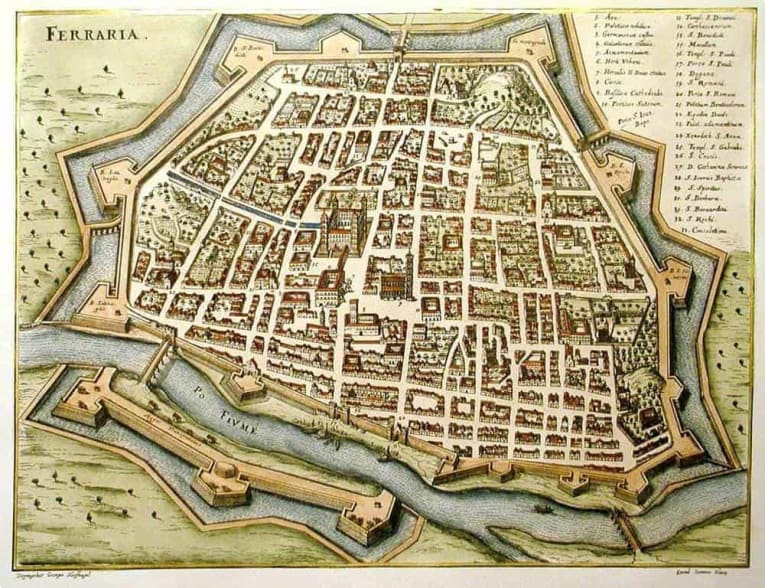
A Map of Ferrara around 1600
Visiting Ferrara Today
The entire town of Ferrara has been designated a World Heritage Site, by UNESCO, due to its beauty and cultural importance, and, if you spend time there today, you’ll be able to see many of the beautiful buildings that stood in the time of the Este dynasty.
Among these is, as described above, Castello Estense (or Este Castle), and a 15th century city hall with two bronze statues of members of the Este family.
Aside from the architecture and history, you won’t want to miss out on the wonderful food and wine. Ferrara is particularly renowned for its local produce. It’s most distinctive local delicacy is likely the coppia ferrarese, a cross-shaped sourdough bread knotted in the middle. It is said it was first made in Ferrara in the 12th century, and you can still see them making it today! Another local favourite is the salama da sugo, a spicy sausage that undergoes a curing process that takes a year.
When it comes to dessert, Ferrara is home to a spectacular dish known as the Zuppa Inglese. Similar to a trifle, with layered custard and sponge cake, there is a theory that it was created in the kitchens of the Este dynasty, in order to feed an English guest.
Ferrara’s proximity to the ocean and the damp environment has given rise to a grape with a distinct character, from which come a range of interesting wines that you may enjoy.
Articles about Italy published by Odyssey Traveller
- Italian Renaissance Families: Urbino and the Montefeltro
- Italian Renaissance Families: Mantua and the Gonzaga
- The Roman Empire
- Who were the Roman Emperors
- Questions About Italy
- Trip Advice for Travellers going to Italy
- 10 Great Books to Read Before You Visit Italy
- as well as more articles on Italy here
External articles to assist you on your visit to Italy
Related Tours

21 days
Apr, Aug, MayRenaissance Italy Tour: Story of Five Families
Visiting Italy
Explore Renaissance Italy on this small group tour though an examination of five significant city states. Florence, Urbino, Ferrara, Mantua and Milan were all dominated by families determined to increase the status of their city through art and architecture. Spend time coming to know the men and women who helped create the cities, as well as the magnificent legacy they left behind.
From A$14,295 AUD
View Tour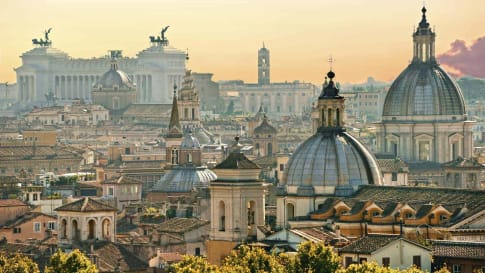
15 days
DecDiscover Rome | Cultural and History Small Group Tour for Seniors
Visiting Italy
Rome is arguably the most fascinating city in Italy, the capital city, once the centre of a vast, ancient empire and still today a cultural focus within Europe. Explore the city in-depth as part of a small group program spending 15 days exploring, just Rome and Roman History.
From A$9,235 AUD
View Tour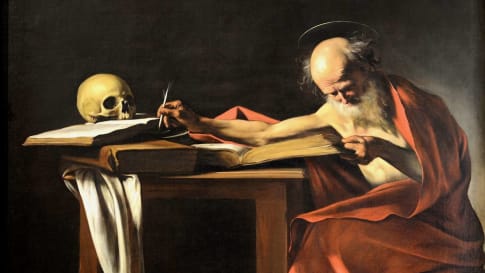
20 days
May, OctCaravaggio’s Journey | Small Group Tour in Italy
Visiting Italy, Malta
On this small group tour of Italy and Malta for mature and senior couples and solo travellers we trace the life of Caravaggio, exploring the artistic works he left behind and the tumultuous life he led. We follow him from his birthplace in Milan to Rome, Malta, Sicily and Naples. In each place he lived Caravaggio left behind a rich legacy of art for us to admire.
From A$15,125 AUD
View Tour

